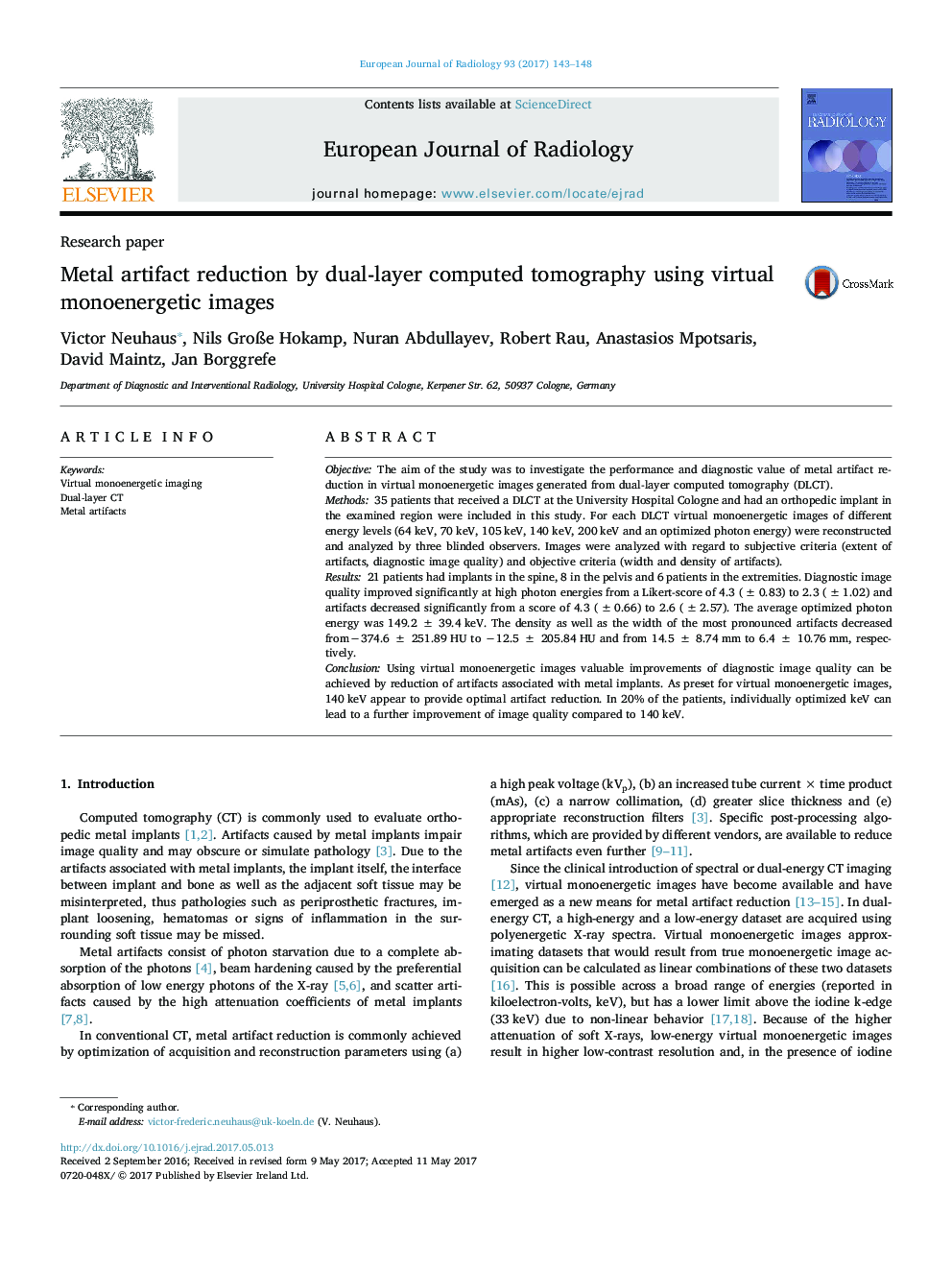| Article ID | Journal | Published Year | Pages | File Type |
|---|---|---|---|---|
| 5726062 | European Journal of Radiology | 2017 | 6 Pages |
ObjectiveThe aim of the study was to investigate the performance and diagnostic value of metal artifact reduction in virtual monoenergetic images generated from dual-layer computed tomography (DLCT).Methods35 patients that received a DLCT at the University Hospital Cologne and had an orthopedic implant in the examined region were included in this study. For each DLCT virtual monoenergetic images of different energy levels (64 keV, 70 keV, 105 keV, 140 keV, 200 keV and an optimized photon energy) were reconstructed and analyzed by three blinded observers. Images were analyzed with regard to subjective criteria (extent of artifacts, diagnostic image quality) and objective criteria (width and density of artifacts).Results21 patients had implants in the spine, 8 in the pelvis and 6 patients in the extremities. Diagnostic image quality improved significantly at high photon energies from a Likert-score of 4.3 (±0.83) to 2.3 (±1.02) and artifacts decreased significantly from a score of 4.3 (±0.66) to 2.6 (±2.57). The average optimized photon energy was 149.2 ± 39.4 keV. The density as well as the width of the most pronounced artifacts decreased fromâ374.6 ± 251.89 HU to â12.5 ± 205.84 HU and from 14.5 ± 8.74 mm to 6.4 ± 10.76 mm, respectively.ConclusionUsing virtual monoenergetic images valuable improvements of diagnostic image quality can be achieved by reduction of artifacts associated with metal implants. As preset for virtual monoenergetic images, 140 keV appear to provide optimal artifact reduction. In 20% of the patients, individually optimized keV can lead to a further improvement of image quality compared to 140 keV.
